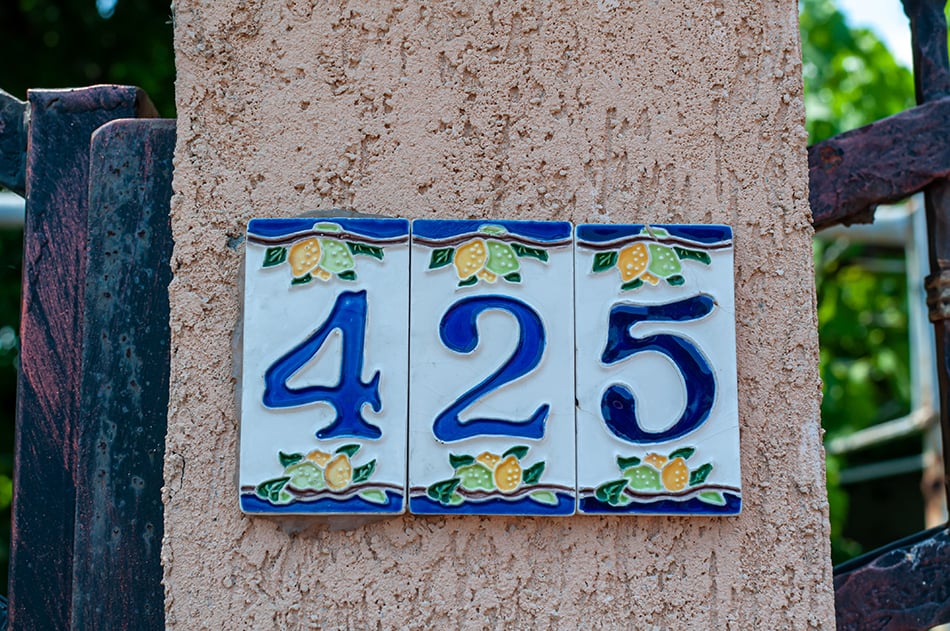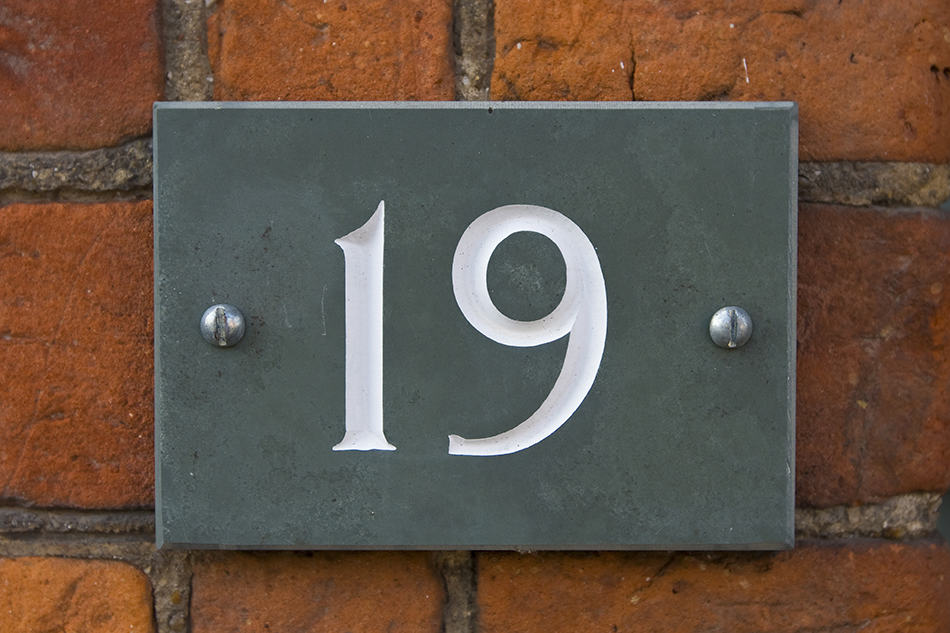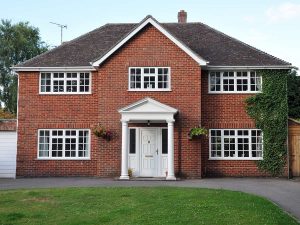A street number and address might seem obvious, but when you move to a different country, understanding their purpose and format can be challenging. Knowing what they are and how they function is essential for navigating your new surroundings and handling daily tasks.
You might encounter places in the world that don’t use street numbers or addresses, and even when they exist, their format varies significantly. Familiarize yourself with the local address system to efficiently find your way around and avoid confusion.
Street Numbers
In the United States, the ‘street number’ might refer to the actual number of the street, for example, ’14th Street’. This street naming is common in big cities such as New York City, where there are a lot of streets close together in a grid shape, and numbering them rather than naming them seemed like a more sensible option.
This practice of numbering streets was first developed by Pierre Charles L’Enfant in Washington, and though it’s most popular in the US, this way of numbering streets has also been adopted around the world in countries such as Canada, Hong Kong, and the United Arab Emirates. However, when most people refer to a street number they are referring to the number of the building on any given street, for example, ’25 Main Street.
Street Number Formatting
In your address, the street number will precede any other information, and it can also be known as the ‘house number’ or ‘building number.’ The US standard address format for most homes is for a number to be followed by the street name, for example, ‘115 Captain Street’.
This numbering system is used to locate your exact property, and so it may come in a different format depending on the type of property you live in. If you live in an apartment building then the building will usually have a number, and your specific apartment could be designated a number or a letter.
Some common formats for this situation are to list the apartment number first, and then the building or street number, for example, ‘Apartment 2, 515 George Street.’ The alternative is to give each apartment a letter, which will follow the building number, for example ‘515b George Street’.
The practice of giving a property a letter rather than a number is most commonly used for smaller apartment blocks, or in the instance where one house will have been renovated to create two apartments, in which case you might just have ’10a High Street’ and ’10b High Street’.
Street Number Designation
Street numbers are typically arranged in a consecutive order. For instance, if you’re searching for number 85 and see numbers 52, 53, and 54, you should continue in the ascending direction.
Certain European locations and Australia use a system with even numbers on one side and odd numbers on the other, which simplifies the search process.
Numbers Vs. Names
Some properties have a name instead of a number, like ‘The Old Rectory, Main Street’. Large, distinguished properties, especially in European rural areas, commonly adopt this approach. However, in England, each house must include a street number in its postal address, even if it also has a name. Businesses frequently use names for their postal addresses, such as ‘New Town Retailers, Bond Street’.
Street Number Uses
You might expect that street numbers have been in existence for as long as the streets themselves, but that is not the case. Some of the earliest evidence of using street numbers is in the early 1500s in Paris, where properties were designated with a street number to determine property ownership. Later, in the early 1700s, street numbers were used in England to help with the organization of postal deliveries.
Towards the latter half of the 1700’s various areas across Europe began to designate house numbers on a large scale to trace troops who were residing in civilian properties. Nowadays, street numbers serve to define a property’s exact geographical location for mailing, tax purposes, and identifying property ownership.
Addresses
While your street number and name might be enough for someone local to your area to locate you, a full address will contain all of the details anyone would need to locate your exact position in the world. In most places, this will include a street number or house number, the street name, the name of the city or town, the state or province, the country, and the zip code or postcode.
Postal systems have become so advanced that in many cases, your property can be tracked down by just using your street number and postal code/ zip code. The zip code will be a collection of numbers and letters and will be unique to your street or area.
The postal code in the USA is called the zip code, but other areas of the world have different names for it, for example, it is the ‘Eircode’ in Ireland, the ‘PIN’ in India, and the ‘post code’ in most English-speaking countries.
The province in an address refers to an area or territory which is recognized as such for administrative purposes. In some countries, a province can be self-governed, while in others it may simply be created by the central government for the sake of ease. The province in an address will also have different names throughout the world. In the US, this is called the ‘state,’ in Japan, it is the ‘prefecture,’ and in the UK, it is the ‘county.’
Address Formats
Addresses are formatted in different ways around the world, which can make it confusing when you’re sending mail abroad, or if you travel to a different country. You’ll need to check the format of the country you are posting in to ensure your letter or parcel doesn’t get lost.
In most western countries, including the United States, Canada, and the United Kingdom, the address is written with the most specific information first, followed by the least specific information. For example, the street number and name will come first, followed by the village or suburb, followed by the town or city, followed by the province, followed by the postal code, and finally the country.
When mailing within your country, there’s no need to list the country in the address, but for international mail, it’s crucial.
Many parts of the world recommend writing the country in capital letters when using it as part of a postal address. There are some parts of the world where the address is not formatted in the sequence described above, for example, much of Europe will list the postal code before the name of the town or city, while many parts of East Asia list the least specific part of the address first, followed by increasingly more specific information, for example, the country will be listed first, and the final line of the address will be the house number and street name.
Address Uses
Modern addresses serve several purposes. First, they direct mail to your home. When you order items online, a full postal address ensures your package arrives successfully. Addresses are also vital for friends and family who plan to visit. You might rely on a GPS or smartphone app to navigate to an address, as it easily generates directions.
Moreover, addresses play a significant role in government census and taxation purposes. Insurance companies also utilize address information and statistics to develop pricing models. Overall, knowing the proper address formats and uses makes it easier to communicate, do business, and stay connected with family and friends.
Frequently Asked Questions
What is the difference between a street number and a house number?
A street number, also known as a civic number, is a unique identifier for a specific location on a street. A house number, on the other hand, refers to the specific number assigned to a residential building. In most cases, the street number and house number are the same.
How can I find my street number?
To find your street number, look for it displayed on your mailbox, home, or building entrance. It is typically a series of digits or combination of letters and numbers. If you are unsure, you can also check your utility bills, property tax documents, or search your address through an online mapping service like Google Maps.
What is the significance of a unit number in an address?
A unit number is essential for identifying individual apartments, condominiums, or office suites within a larger building. Including a unit number in your address is crucial for accurate mail delivery and emergency service assistance.
How do I find a street number on Google Maps?
To find a street number on Google Maps, enter the approximate location or address in the search bar, then zoom in on the map to view the street numbers displayed on the buildings or homes. Clicking on the specific location will also show the full address, including the street number.
Is there a difference between a street address and a mail address?
In most cases, a street address and a mailing address are the same, consisting of a street number, street name, and unit number (if applicable). However, some situations require a different mailing address, such as a post office box, a private mailbox, or rural route designation.
Can you provide an example of a street address?
An example of a street address is:
123 Main Street
Apartment 4B
Your City, Your State, Your Zip Code
This address includes the street number (123), street name (Main Street), unit number (Apartment 4B), and the city, state, and zip code for accurate mail delivery and navigation.








